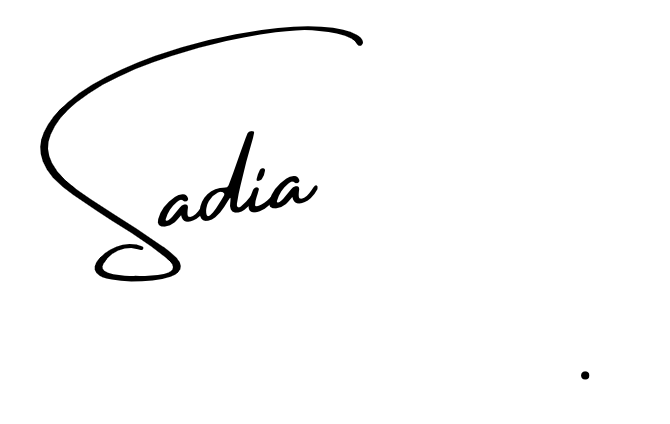#21 Gentrification: How to Move In Without Pushing Out
Rather than a broad critique of gentrification this issues spotlights the language and behaviours of gentrification and how we can add value to a neighbourhood versus merely taking from it.
My love of HGTV knows no bounds.
This month’s topic has been partially inspired by my fixation with the HGTV network. For the uninitiated, this American channel, broadcast worldwide, primarily focuses on reality shows about home-buying, renovations, and flipping.
Given that most of the content comes from the USA, I’m not always familiar with the neighbourhoods and cities featured, but the concept is pretty standard: a young couple or family, usually but not exclusively white, purchase a home in a tired-looking neighbourhood hoping to make a decent return on their investment and, as they typically articulate, “improve the neighbourhood.”
They rarely, if ever, discuss gentrification, but it’s often the undercurrent of shows like Good Bones, Bargain Block, and the jewel in the HGTV crown: Fixer Upper. These shows also mirror my experiences living in inner-city London—Hackney, to be precise—which has undergone significant changes over the years, driven primarily by gentrification.
Given that this newsletter is read across 34 countries, I should provide more context. London comprises 32 boroughs and is then segmented into six zones based on travel connections and their proximity to the centre. Zone 1 is the city centre, and Zone 6 is on the outskirts. Hackney is located in Zone 2.
If that hasn’t entirely clarified things and to provide a more international (to me!) example that people will probably be more familiar with, I’d describe Hackney as being on the same trajectory as the Brooklyn (NYC) neighbourhood of Williamsburg. An area that was historically industrial and home to working-class communities but now boasts a Hermès boutique.
Although Hackney isn’t at all Hermès-ready, people have gone from wincing when I said I lived in Hackney to congratulating me. In short, they view me as having lucked out but having lived through many of these changes, I’d ask, “At what cost?”
Picture credit: Guardian
What do we mean when we talk about gentrification?
According to Jacob L. Vigdor's 2002 paper “Does Gentrification Harm the Poor?” Commentators have failed to arrive at a consensus on what constitutes gentrification. For this essay, I will use the broad definition of " the process of change in the character of a neighbourhood through the influx of more affluent residents and the investment they bring.”
Some researchers also impose an additional condition that initial residents must be displaced in the process for it to be considered gentrification.
The word ‘gentrification’ derives from ‘gentry’—in Old French, it means people of “gentle Birth,” and in English, it denotes ‘landed gentry’ and ‘gentlemen’.
Picture credit: Booknomics
British sociologist Ruth Glass first used the term in its current sense in 1964 to describe the influx of middle-class people displacing lower-class residents in urban areas; she cited the London Borough of Islington as an example.
Islington, incidentally, borders Hackney, and it was what I coin ‘middle-class spillage’ from Islington that kickstarted the gentrification of Hackney, where people who would rather live in Islington find that the next affordable option is the neighbouring borough. If this continues, I foresee that perhaps 20-30 years from now, only the most affluent will reside within the city’s six zones.
Can gentrification be all bad?
My relationship with gentrification is complicated—I’ve benefited from it and felt its impacts. Anyone who grew up in an area with a higher-than-average demand for housing understands its impact on our lives—from school catchment areas to commuting costs to our overall standard of living. In our capitalist dog-eat-cat world, it’s all linked to where we can afford to live.
One of the many problems with gentrification is that the places that get gentrified are often the places where people of colour live. Initially, gentrification may make a neighbourhood temporarily ‘more diverse,’ but as the original residents are priced out, it is less a victory for social cohesion and racial justice and more the slow march to racial displacement.
These issues are systemic and structural at their core, and our respective governments should tackle them as a priority. In lieu of this, I wanted to focus on the behaviours we can exhibit when we move into a new neighbourhood, especially those historically being communities of colour.
1. Remember, you’re not “settling” a new community; you’re joining an established one.
Before continuing, I urge you to watch this short clip of a man who came to be called the “Christopher Columbus of Brooklyn.” In the video, he claims he “settled Brooklyn for white people.” His language is explicit (TW: ⚠️) and provocative, but what he says underscores a ‘quiet part, loud’ truth about some attitudes in gentrifying neighbourhoods.
Modern-day-Columbus aside, when we move somewhere new, we must recognise that a community existed long before our arrival. Community cohesion benefits when newcomers genuinely engage with what’s already there rather than reinventing the wheel.
For instance, if you want to make friends or network, start by joining established local groups—say, a Mother & Baby group—rather than creating your own. This may seem like a no-brainer, but consider why, in a racially diverse neighbourhood, you might still see gatherings where everyone is white. It’s often a consequence of not connecting with existing groups, which can unintentionally reinforce divisions.
If the gatherings or groups you join aren’t diverse, particularly in a multicultural area, it could be perceived as intentional exclusion. Connecting with those already in the community isn’t just about socialising; it’s a way to be part of the community’s social fabric.
2. Think about why you moved there in the first place
Many people are drawn to inner-city areas precisely for their diversity—their literal colour, vibrancy, and rich history. To truly embrace what makes these neighbourhoods unique, learn about their past and avoid turning them into a sanitised version of what you want them to be. Supporting the community in tangible ways, like shopping at local independent stores instead of the chains moving in, helps maintain the neighbourhood’s spirit and vitality—precisely the qualities that attracted you in the first place.
3. Avoid saying it’s “still a bit rough”—we sense what that could imply.
Saying this sounds like code for “it’s not yet white enough,” which comes off as dismissive and misses the richness of what the neighbourhood already offers.
4. Question measures that aim to improve community ‘safety.’
One critical marker for gentrification is the increase in 999 or 911 calls. This doesn’t necessarily mean the neighbourhood has become more dangerous; it often reflects new residents misinterpreting local norms. Where they might see potential danger or antisocial behaviour, long-time residents see neighbours gathering or interacting in familiar ways. Over time, this misinterpretation leads to increased policing, which can further erode social cohesion and trust within the community.
5. Understand the difference between regeneration and gentrification:
This may sound like semantics to some, but it’s a critical distinction. Regeneration brings investment to an area, often in response to new demographics—like families moving into historically older communities or newcomers attracting private and public investment. Ideally, these changes offer an opportunity to enhance and build upon what already exists rather than starting over. Strive for a regeneration mindset that supports and enriches the community rather than replaces it.
I know there are no easy answers to the negative impacts of gentrification. Ultimately, I’d like to see housing decommodified and recognised as the human right it truly is. This is a challenging concept in the UK, where we have a deep-rooted preference for ownership over long-term renting, but decommodifying housing would mean creating affordable homes where people can live securely and sustainably, shielded from the economic, environmental, and political crises that too often hit low-income residents hardest—particularly in communities of colour. When we uplift the most vulnerable, everyone benefits. That, for me, is a universal truth worth striving for.
October recommendations:
📻 LISTEN to Ezra Klien in conversation with American author and journalist Ta-Nehisi Coates
Although I was familiar with Ta-Nehisi Coates’ work, I haven’t had the opportunity to read his latest book, The Message, which the Associated Press has described as “part memoir, part travelogue, part primer.” The book includes chapters reflecting his visits to Dakar, Senegal, Chapin, South Carolina, and the West Bank and East Jerusalem.
It’s this last destination that has garnered the most attention as Coate describes the ten days he spent in the Occupied Territories and the lives of the Palestinians he met.
Many of you will have seen Coate being interviewed on CBS Mornings earlier this month. The interview was so racially coded that the channel's Deputy News Chief, Adrienna Roark, admitted that it “[did not] meet our editorial standards.” Because of this highly problematic interview, I wanted to find out more about the book, and that’s how I came across this podcast interview, where Coates and Host Ezra Klien, an American Jew, discuss his observations of the West Bank and East Jerusalem and Klien’s experiences in Israel.
Coates and Klien don’t always agree on everything, but their conversation is, at its heart, a grown-up and empathetic conversation—everything the CBS interview was not and more of what we desperately need.
You can listen to The Ezra Klien Show on Apple and Spotify.
📺 WATCH this TikTok from @DrinkableBryan
It’s called the ‘White Challenge,’ I know some of you will cringe at that title, but I promise it is worth the two minutes of your time. It cleverly demonstrates just how prevalent racial microaggressions are and how easy it is to fall foul of them.
You can follow @DrinkableBryan on TikTok here
Okay, friends, that’s it for now. If you’d like to follow me on @_languagematters that would be just lovely. If you have anything to say or ask, please don't hesitate to let me know in the comments below.
As always, thank you for reading this post. I’m so glad you’re here. If you like what you’re reading, please consider sharing this newsletter. If you have the time to ‘like’ it by clicking the ♡, that would mean a lot to me, as it’ll help more people see it.
Until next month, take care,







